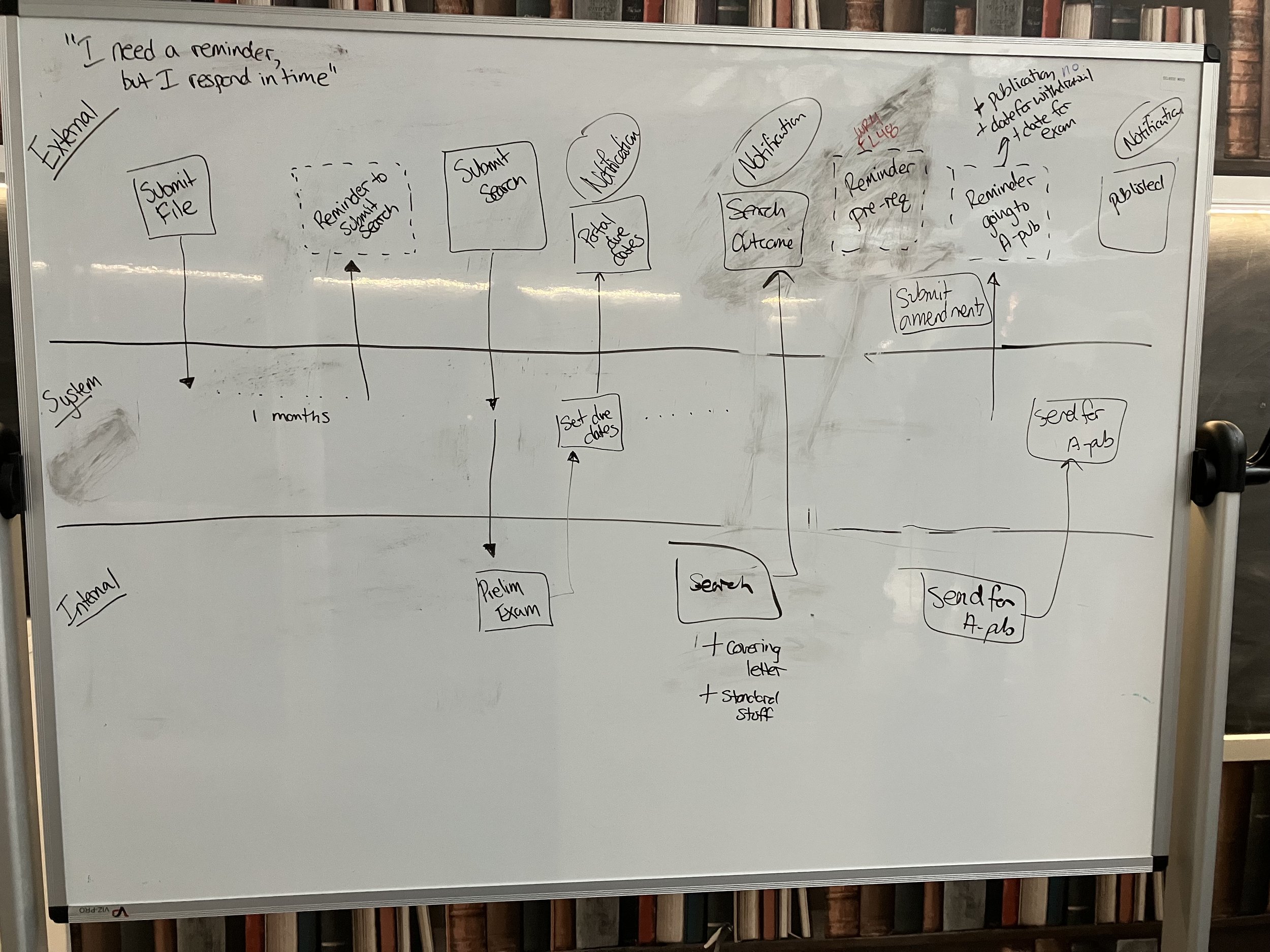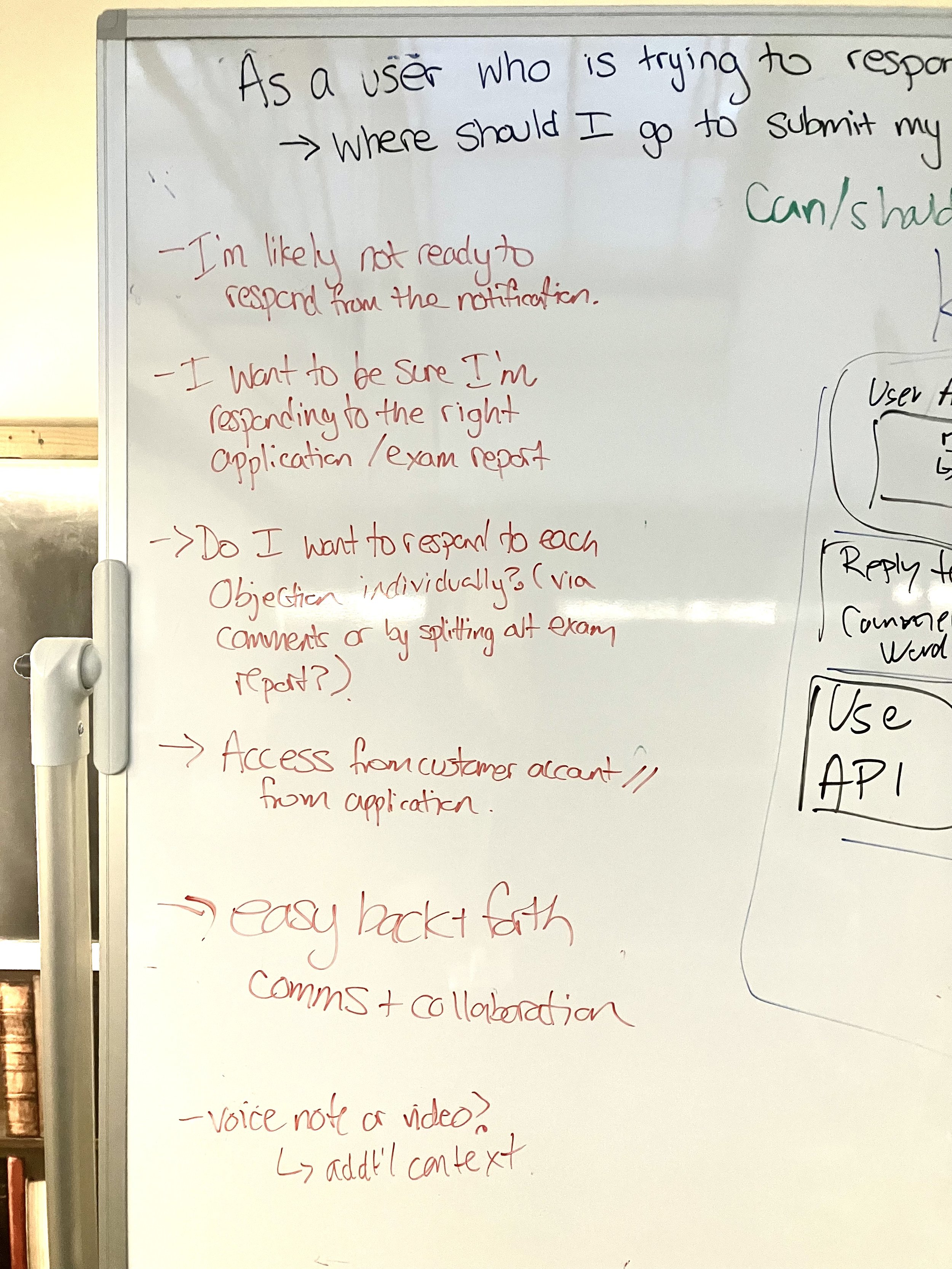Transforming the UK’s Patent Application Process
The UK’s Intellectual Property Office (IPO) receives almost 20,000 patent applications per year, encouraging homegrown innovation, international competitiveness, and driving economic growth for the 6th largest global GDP, and second largest GDP in Europe. Whilst the number of patent applications continue to rise, the application and examination process continue to remain the same as it was for the past 50 years.
Transforming the patent application process will reduce the backlog of applications waiting to be processed and improve the overall user experience across the end-to-end process.
Service design, UX research and design as part of
the Service Transformation team with Deloitte Digital.
July 2022 — May 2023
How might we transform the patent application process to enable a better end-to-end user experience?
The Role
Understand and define end-to-end As-Is service and user journeys through user interviews moderated workshops.
Identify pain points and areas where the user experience can be improved.
Determine a baseline for ‘What Good Looks Like’ when proposing new ways of working.
Work with Product Owners to prioritise backlog and user stories ahead of sprints.
Independently identify significant opportunities in optimising workflow and build consensus around roadmaps.
Moderate sessions with a full stack cross-functional product team to solve technical challenges.
Ensure product meets compliance standards for information risk management.
Build and maintain library of process documentation to enable continuous improvement and knowledge transfer.
The Challenge
The IPO is the official UK government body responsible for intellectual property (IP) rights including patents, designs, trade marks and copyright. We’re responsible for setting IP policy, educating businesses and consumers about IP rights and responsibilities, supporting IP enforcement, and granting UK patents, trade marks and design rights. As part of the IPO strategy to 2026, the IPO has an ambition to deliver excellent IP services, create a world-leading IP environment, and make the IPO a brilliant place to work.
Currently, the end-to-end process for a patent application is confusing for an unrepresented applicant, has a lengthy turnaround time on outcomes (depending on the application type, it can take up anywhere between 18 - 36 months), and the legacy software for patent examiners is clunky, slow, and requires a lot of manual coordination between teams to process an application.
Transforming the end-to-end process will result in a smoother application process for applicants, reduce dependency on expensive legal expertise for independent applicants, and a more integrated process for internal users for a quicker turnaround time on patent applications. My focus on this project was to lead the internal service design for the IPO transformation.
The Outcome
The release of the minimum viable product (MVP) and subsequent releases will result in:
A secure way for customers to independently access and track patent information
Personalised notifications to help customers stay informed in their application’s lifecycle
Alignment of patent application service with the Government Digital Services (GDS) best practice
Reduced need for 1-2-1 support, providing a higher quality of support for users that need it
Reduced failure demand on support resources and improved overall support management means enhanced customer support satisfaction
Access to up-to-date information gives confidence in the status of their intellectual property
Robust data quality that enables users to analyse and use the IPO's data on intellectual property
Uplift the current user interface for the IPO’s patent library to enable better access to filed and granted patent applications
The Process
Work redacted for NDA.
01. Mapping the As-Is process
The As-Is internal process for patent examination and processing an application was drawn up following many hours of interviews with internal users, such as patent examiners and administrative assistants.
A deep understanding of the As-Is process is integral to identifying opportunities to streamline processes and reducing human error in the highly-manual current ways of working.
Including the internal users in this mapping also enabled them to have a good understanding of their own end-to-end services and how they are currently delivered. Aside from keeping them engaged and bought into the transformation process, this practice also enabled internal users to identify gaps or opportunities to improve the service.
02. Workshops with key internal stakeholders
Regular workshops with key internal stakeholders was an important part of the process of getting their buy-in. This involved using best practice in Design Thinking methods to break down the problem-solving process for the stakeholders, keeping their internal users and external customers at the forefront of the solution.
Stakeholders were encouraged to radically rethink the possibilities of their ways of working, in this particular instance, using the SCAMPER technique to brainstorm alternatives to the As-Is process.
03. Identifying user needs
Following workshops and user research sessions, the gathered outputs were synthesised to produce user needs that informed the solution. Identification of user needs ensures that the transformed service meets the requirements and expectations of the end users.
Playing back these user needs also highlighted areas in the current service where users had needs that weren’t being met, resulting in the pain points experienced by users of the current service.
These user needs were also imperative in identifying the changes in the process with lowest-hanging fruit for the highest-impact to user satisfaction.
04. Mapping the To-Be service blueprint
Iterations across discrete parts of the end-to-end service were pulled together in one end-to-end service blueprint, which allowed anyone unfamiliar to the service transformation to understand the goals, areas, user archetypes, and stages in the journey.
This service blueprint enabled a single view of the user journey, all the relevant touch points, front- and back-of-house interactions, supporting systems, and pain points addressed by the new service.
Including blurbs of user feedback from research added some colour to show that the future-state of the service was designed with the end user in mind.



